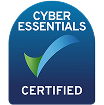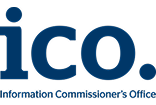Care Certificate learning pathways – a deep dive for training providers and employers

The Care Certificate standards ensure that employees begin their career journey with the core skills and understanding they need across essential subject areas.
In 2025, the Care Certificate evolved from an employer-led provision to a regulated qualification – a significant step that strengthens quality and consistency across the social care sector. Recognising employee skills through training and qualifications offers clear benefits for organisations:
- Progression routes lead to better retention and employee satisfaction
- Continuous learning increases staff confidence and capability
- Qualifications and training lead to higher quality and safer care.
Effective workforce development builds capability and creates clear career ladders, underpinned by industry standards and recognised qualifications like the Care Certificate, which progresses from Level 2 through Level 5.
Our sister organisation, Skills for Health, are part of the solution – as co-authors of the Care Certificate, they provide industry-leading eLearning mapped precisely to the standards.
In this blog, we take a look at some typical progression routes for the social care workforce, and how Care Certificate training can be mapped into qualification pathways, saving organisations time and money.
First things first – what’s involved in the Care Certificate?
The Care Certificate – developed by our sister organisation Skills for Health, along with Skills for Care and NHS England – is a set of 16 standards that define the basic knowledge, skills and behaviours expected of new care support workers during induction. It’s a vital framework for the induction of new staff, embedding a commitment to portable knowledge and skills development in the sector.
Currently, 54% of care workers do not hold a level 2 qualification – and we believe that they should be recognised for the skills that they hold in one of the UK’s key sectors.
The Care Certificate includes 16 standards, which cover:
1. Understanding your role
2. Personal development
3. Duty of care
4. Equality, diversity, inclusion and human rights
5. Person-centred approaches
6. Communication
7. Privacy and dignity
8. Fluids and nutrition
9. Awareness of mental health and dementia
10. Safeguarding adults
11. Safeguarding children
12. Basic life support
13. Health and safety
14. Handling information
15. Infection prevention and control
16. Awareness of learning disability and autism
Organisations can use the Care Certificate to onboard staff with a reliable baseline of skills and knowledge, before supporting them on to progression pathways either at a higher level or within a specialisation.
Skills for Health offer a total of 19 eLearning courses to fully cover each of the 16 standards, providing all knowledge components required for the Care Certificate. This can be used as evidence toward the regulated qualification, helping organisations access available funding.
See eLearning for the Care Certificate
How does the Care Certificate help learning and development programmes?
Workplace competence evidence: signed observation checklists, reflective accounts, and supervisor sign-off that can feed into competence units of RQF diplomas and apprenticeship portfolios.
Knowledge preparation: the Care Certificate’s knowledge elements reduce time spent on duplicated teaching of core topics (e.g. safeguarding, infection control, communication), helping learners move more quickly into higher-level content.
Gateway and recruitment: employers can use the Care Certificate as an induction benchmark for apprenticeships – candidates who already hold the Certificate are typically better prepared for on-programme learning and assessment.
Recognition of Prior Learning (RPL)/Accreditation of Prior Learning (APL): Care Certificate evidence can be mapped to qualification units, enabling learners to claim credit and progress faster (subject to awarding organisation rules).
Funding, eLearning and assessment for Care Certificate training
Funding is available for social care organisations to train their employees to the Care Certificate (and other) standards. To be eligible for funding, organisations must use a training provider approved through Skills for Care’s Quality Assured Care Learning Service. In addition, that training provider must deliver an approved qualification from a recognised awarding organisation.
Currently, employers can gain up to £1,540 per learner, with up to 60% being available at the start and 40% being available once the learner has successfully gained a Level 2 Care Certificate qualification. These funding rules are part of the Learning and Development Support Scheme (LDSS), which also covers a range of other healthcare training and qualifications.
eLearning is a dominant form of workplace training, especially for the Care Certificate. By using trusted eLearning platforms and learning management systems, organisations can clearly access and evidence learner progress and knowledge achievement, to facilitate learning and development programmes and funding applications.
Spotlight: Skills for Health Care Certificate eLearning bundle
Gain instant access to 19 eLearning courses aligned to the Care Certificate, written by the authors of the standards. This bundle is designed to complement work-based assessment of skills by a competent assessor and forms the core eLearning component of the certificate.
Benefits include:
- Efficiency: Streamlined learning designed to save time and money
- Flexibility: Skills for Health work with organisations large and small, providing tailored support
- Quality: Trusted content developed by the UK’s leading authority in healthcare workforce development
See eLearning from Skills for Health
Discount available
Discount available for iCQ customers for Care Certificate bundle
eLearning that is already mapped to the Care Certificate standards will take learners most of the way to gaining a regulated qualification, allowing programmes to focus on the competence and assessment elements – something that most care sector organisations already do. This final assessment stage is the last step in meeting funding requirements and in formally recognising staff training and skills development.
Typical progression routes for the social care workforce
Below are the common, practical progression pathways from the Care Certificate up to Level 5:
- Care Certificate → Level 2 Adult Care Certificate
- Care Certificate demonstrates knowledge and workplace induction, observed practice can feed into competence elements
- Level 3 Diploma in Adult Care or equivalent, and Adult Care Worker apprenticeship.
- Care Certificate evidence can cover some induction/competence checks and knowledge checks used in workplace portfolios.
- Progression into leadership/management (level 4/5) such as Level 4 Diploma in Adult Care, level 5 diplomas such as Level 5 Diploma in Leadership and Management for Adult Care, Lead Practitioner in Adult Care or Leader in Adult Care apprenticeships.
- Prior Care Certificate and level 2/3 learning provides practical evidence while regulated qualifications cover broader leadership knowledge, finance, service delivery, and other skills required at this level.
Practical tips for using Care Certificate as evidence for training providers or employer providers
Map, map, map – every Care Certificate standard needs at least one mapped unit/outcome in your regulated offering.
Define additional assessment – where Care Certificate evidence is knowledge-only, supplement with workplace observation or professional discussion tied to the regulated criteria.
Digital audit trail – ensure supervisor sign-offs, assessor feedback and dates are captured in the e-portfolio.
Internal Quality Assurance – internal verifiers should sample Care Certificate evidence as part of standard sampling for regulated awards.
Adjust delivery hours – mapped Care Certificate learning can reduce taught hours; document how much is reduced and retain records.
Recognition of prior learning – confirm with awarding organisation whether mapped evidence is acceptable as RPL/APL (do this in writing).



